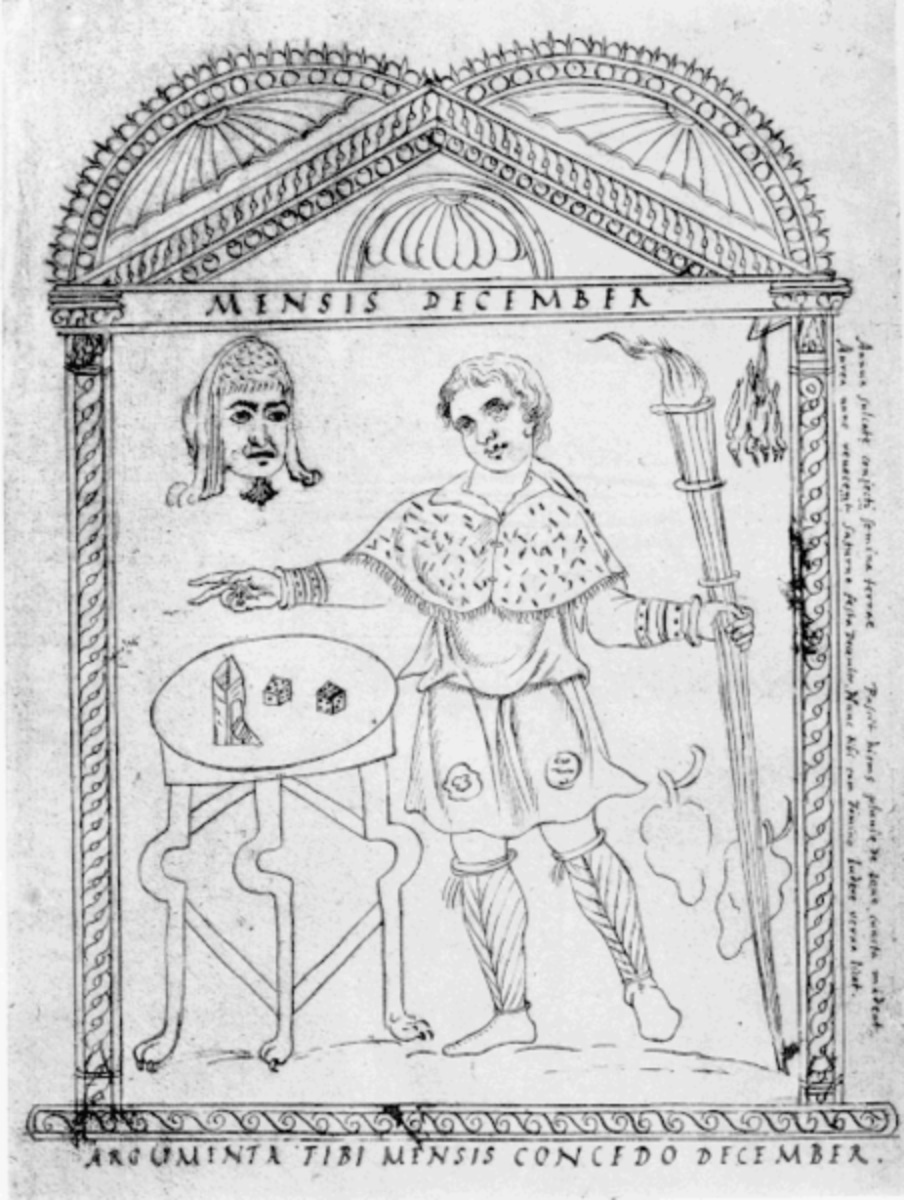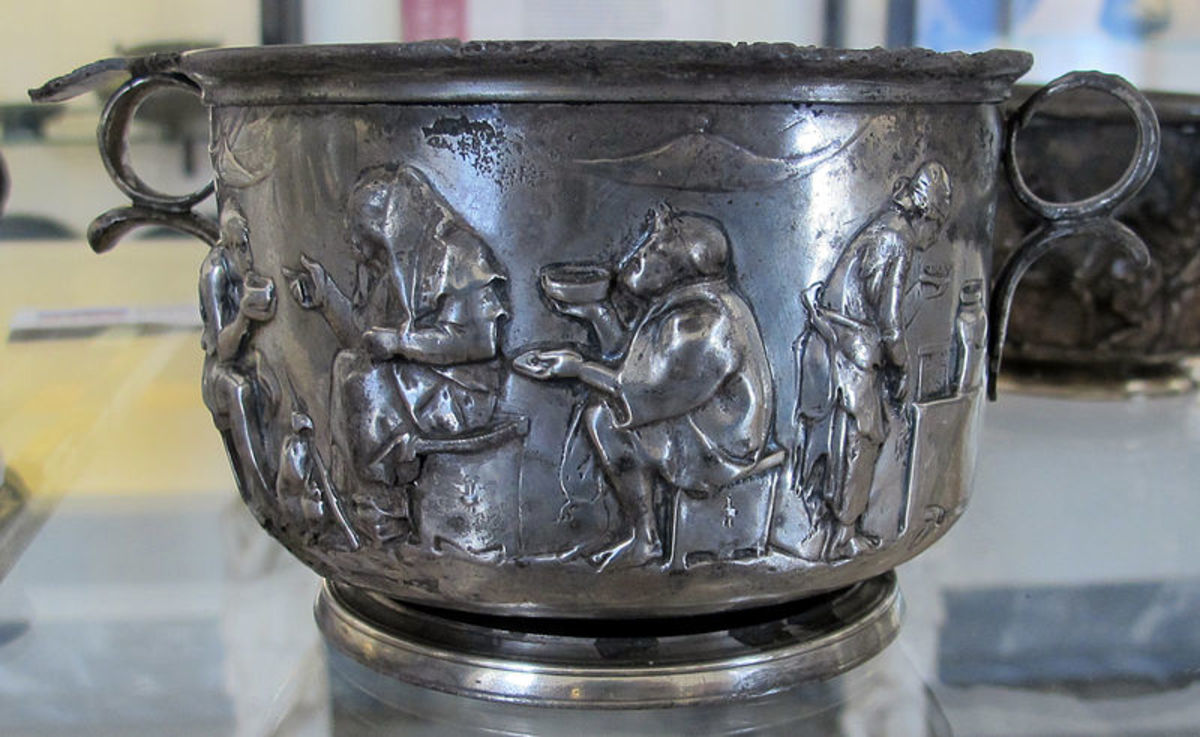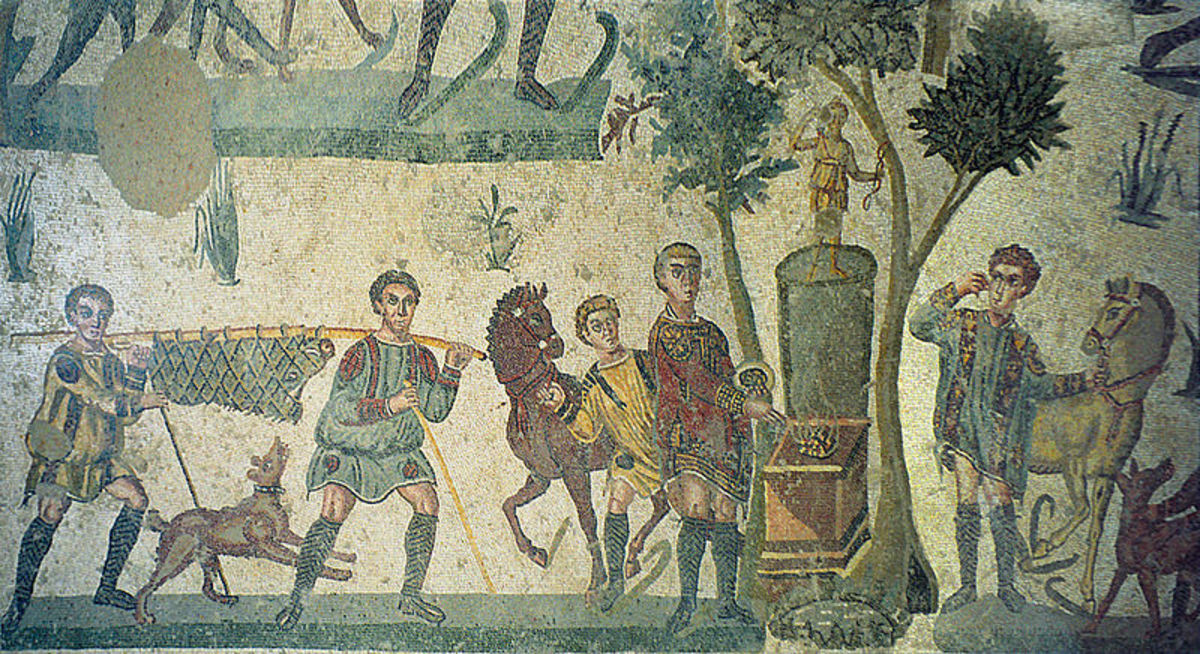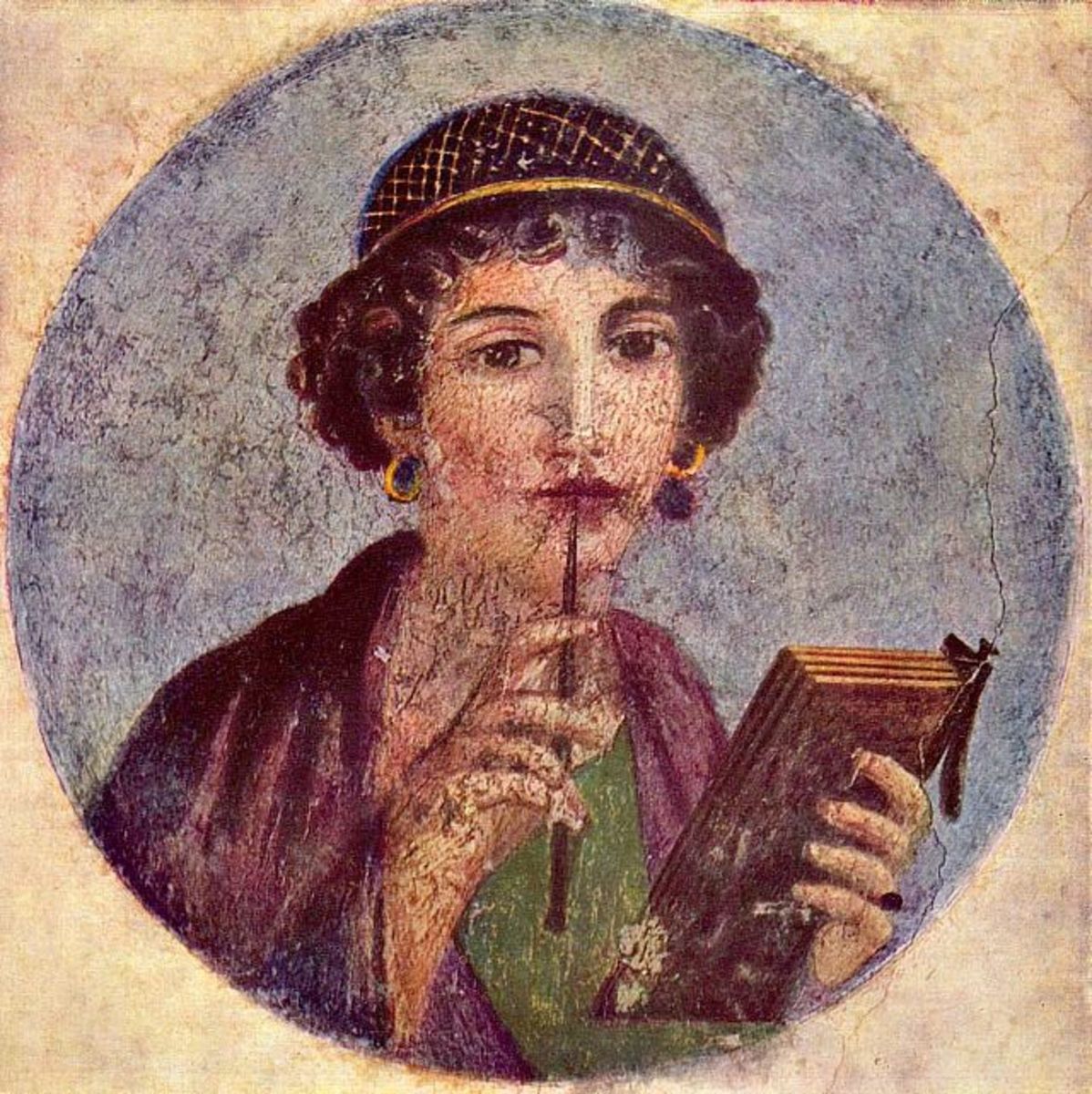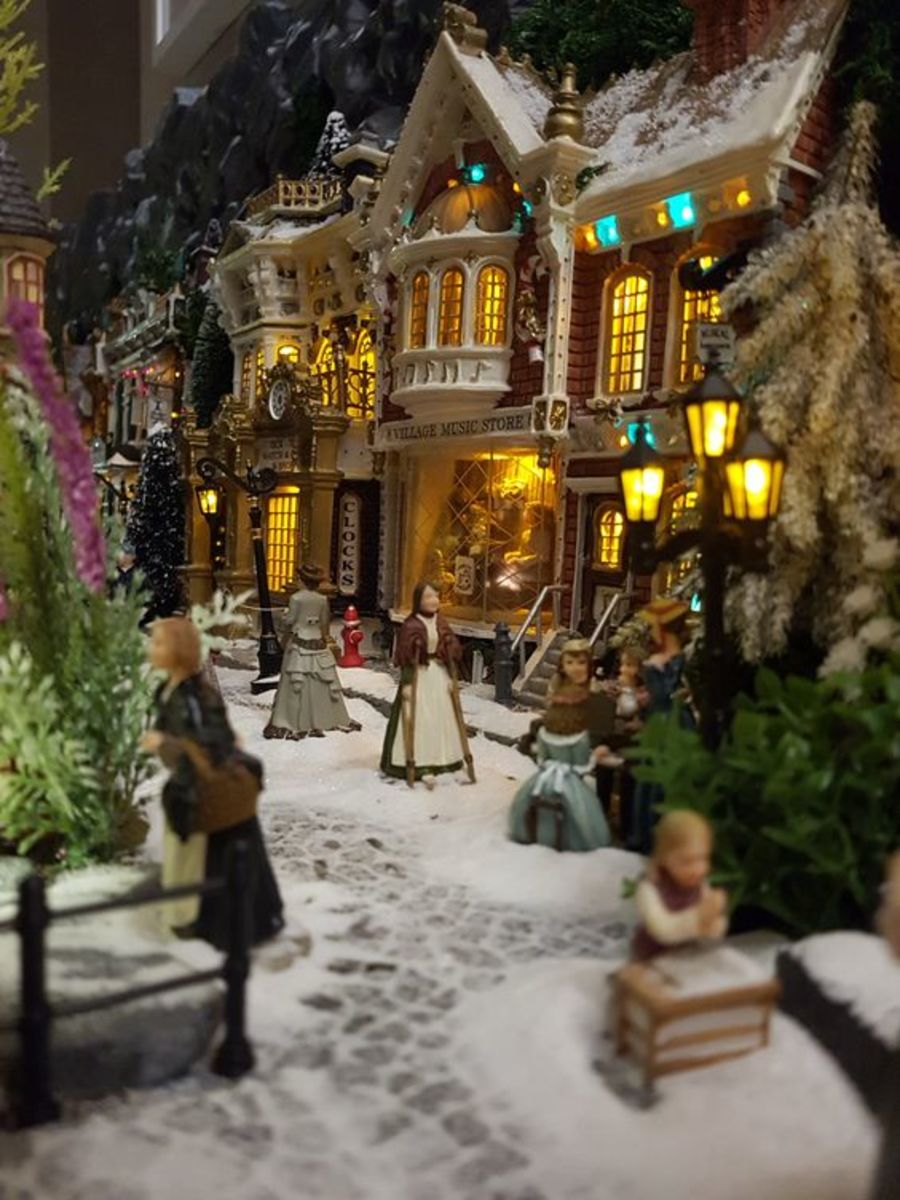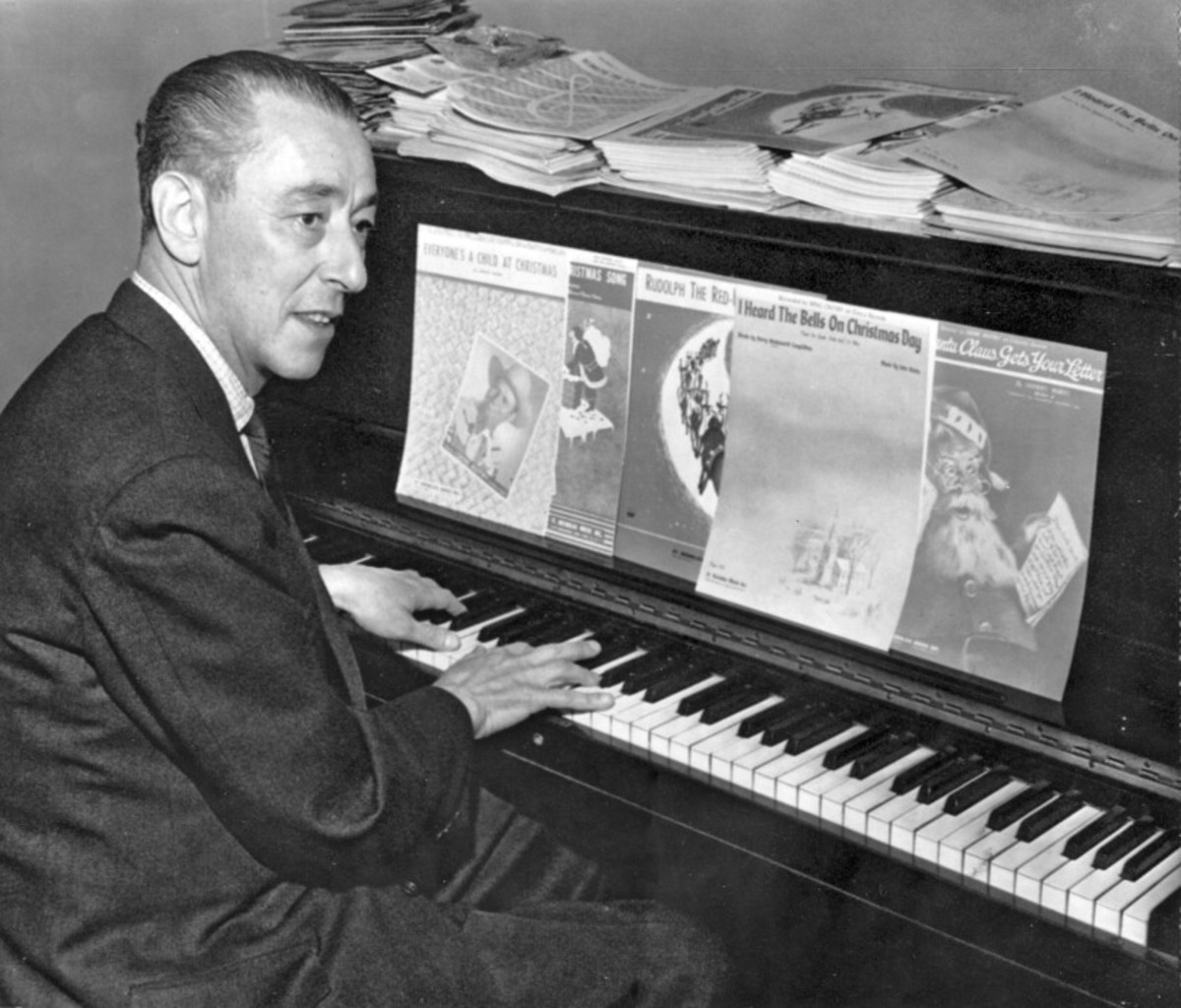Saturnalia, an Ancient Roman Festival at Christmastime
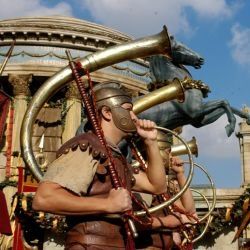
Saturnalia, the Best of Days
Everyone loves a holiday. The Ancient Romans were no exception and Saturnalia was the most popular holiday of the Roman year.
From December17 to January 3, families gathered together to share the spiritual renewal in the symbolic rebirth of the Divine and to welcome a new year.
There were special theatre performances, street parades and public displays of merrymaking, while people shared feasts with friends, exchanged gifts, and decorated their homes with festive greenery.
"For how many years shall this festival abide! Never shall age destroy so holy a day! While the hills of Latium remain and, Father Tiber, while thy Rome stands, Saturnalia shall continue" : Publius Papinius Statius
Saturnalia Celebrates the Returning Sun
Sol Invicta
The Saturnalia festival has an astronomical character, referring to the completion of the sun's yearly course, and the commencement of a new cycle.
The sun is at its lowest aspect at the winter solstice. The earth is cold, most plants are dead, and it was believed that the sun might also be approaching death. Saturnalia celebrated the sun overcoming the power of Winter, with hope of Spring when life would be renewed.
It was the Feast of Sol Invicta, the Unconquered Sun.
Saturnalia is a time of transition, from the dark to the light.
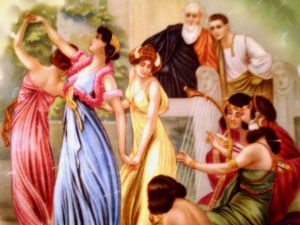
Our Christmas owes much to Saturnalia
Until the Age of the Victorians, Saturnalia largely influenced the nature of the celebration of Christmas.
The central feature of Saturnalia was merry-making. This is of course a feature of modern Christmas, but the Romans were much more exuberant, along the lines of Mardi Gras--and so were our Christmas festivities until Queen Victoria replaced them with German customs in deference to her husband, Prince Albert.
But the Romans gave themselves up to wild joy. They feasted, they indulged, they gave gifts, they sang, danced and celebrated in noisy street parties.
As, perhaps with a little less licentiousness, so do we.
Io! Saturnalia in Modern England - The Ancient Romans march again
Many Christmas traditions and customs are transparently based on the old Roman feast of the Saturnalia.
In Chester, in the North West of England,, the ways of the Romans have not been forgotten. During the traditional seven days of festivities a torch-lit procession of Roman Soldiers march through the centre of the city.
Topsy Turvey Days
Normal Order was Suspended
During Saturnalia the usual order of the year was suspended, as were personal grudges and quarrels. Businesses, courts and schools closed.
Restrictions were relaxed, formal togas were kept in the clothes chest as men slipped into more comfortable tunics, cross-dressing was encouraged and the social order inverted.
Gambling was allowed in public and even slaves were allowed to throw the dice. Rich and poor were equal, slaves served by masters, and children headed the family in an ancient game of Misrule.
Candles and lamps lit up the long nights defying the spirits of darkness.The city of Rome itself was a bright spectacle of lights.
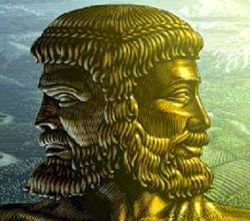
Janus
Lord of the Doorways
Janus with his two faces is the mystical personification of transition, from the dark to the light.
Doors and gateways look in two directions, so Janus looks both backward and forward at the same time. With his two faces, one regarding what is behind and the other looking toward what lies ahead, Janus represents the contemplation of an old year while looking forward to the new
Transition between what has been and what will be.
Between past and future, memory and imagination, knowledge and fear.
Between hearth's comfort and the benighted gulfs of the endless void.
If we remember Janus at all these days, it's at the New Year
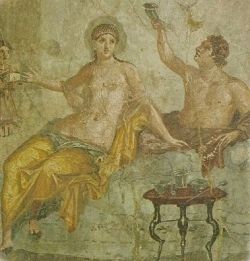
The Days of Saturnalia
Festivities for great thanksgiving and rejoicing
Merrymaking started with Consualia, the end of sowing season festival, went on to Dies Juvenalis, Coming of Age for Young Men, followed by the exultant Feast of Sol Invicta, the Unconquered Sun, on December 25.
Without much of a pause to recover, Janus Day on January 1 quickly came after the religious feast and Compitalia, the blessing of the fields, followed on January 3.
These were Festivities for great thanksgiving and rejoicing! Families gathered together, much as we do still, to relax with a short break after hard work, to spend time with the children of the house and to have parties with their friends. It was the time to celebrate spiritual renewal in the symbolic rebirth of the Divine and to welcome a new year.
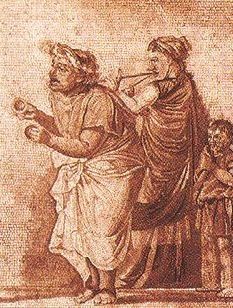
Holy Day of Saturn
A God from the Golden Age
Apart from the masquerades and mayhem, Saturnalia was a holy day sacred to Saturn himself.
He was honoured as a benign deity from the Golden Age. This was an era in which plenty abounded and nothing had appeared to corrupt peace and happiness, but the world had since degenerated with the lust for gold.
As the Saturnalia returned each year it brought thoughts of the peaceful reign of Saturn long, long ago, when everyone was happy and everyone was good. Back in the good old days.
The Temple of Saturn was dedicated during Saturnalia, and the woolen bonds which fettered the feet of his statue were loosened to symbolise the liberation of the god. The statue was hollow and refilled with fresh olive oil, as a symbol of his agricultural functions.
After sacrifice at the temple, there was a riotous drunken feast with the celebrants shouting "Io, Saturnalia!" endlessly. A sign for the happy festivities of the season to begin!
All of this feasting, drinking and merrymaking hopefully resulted in the conception of children.
Saturnalia: A Marcus Didius Falco Novel - The Ancient Roman Super-Sleuth
A rebellious German priestess and a murdered nobleman keep informer-investigator Marcus Didius Falco busy as he fights crime in the morally depraved city at the pleasure of the emperor.
Falco's task becomes even more daunting during the season of merry-making and debauchery of Saturnalia.
Christmas Decorations from a more modern Rome
The Ancient Romans hung garlands and wreathes over doorways, windows and stairs and ornaments of sun symbols, the moon and stars were festooned in the garden. These days, we bring our tree inside, but we still like to decorate our homes for the feast.
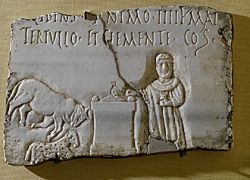
Dreams of the Golden Age
As an old culture is replaced
Jupiter, Neptune and Pluto were representative of Air, Water and Death, the three things that time itself cannot kill and the overthrow of Saturn symbolised the demise of the old culture which worshiped this ancient God.
In Roman mythology, after Saturn was dethroned by his son Jupiter (the Greek Zeus), he hid himself (latuit) in the countryside, called Latium in his honour.
At the invitation of the god Janus, he reigned over Rome's golden ages, bringing prosperity, abundance, and civilisation. The Romans indulged in nostalgia for this legendary state, the Golden Age of Latium, as we occasionally yearn for the 'good old days'.
Many of the rites of the Saturnalia were intended to restore that long lost mythical Utopia--if only for a short time each year.
All comments are welcome. You don't have to be an Ancient Roman to leave yours
© 2008 Susanna Duffy




